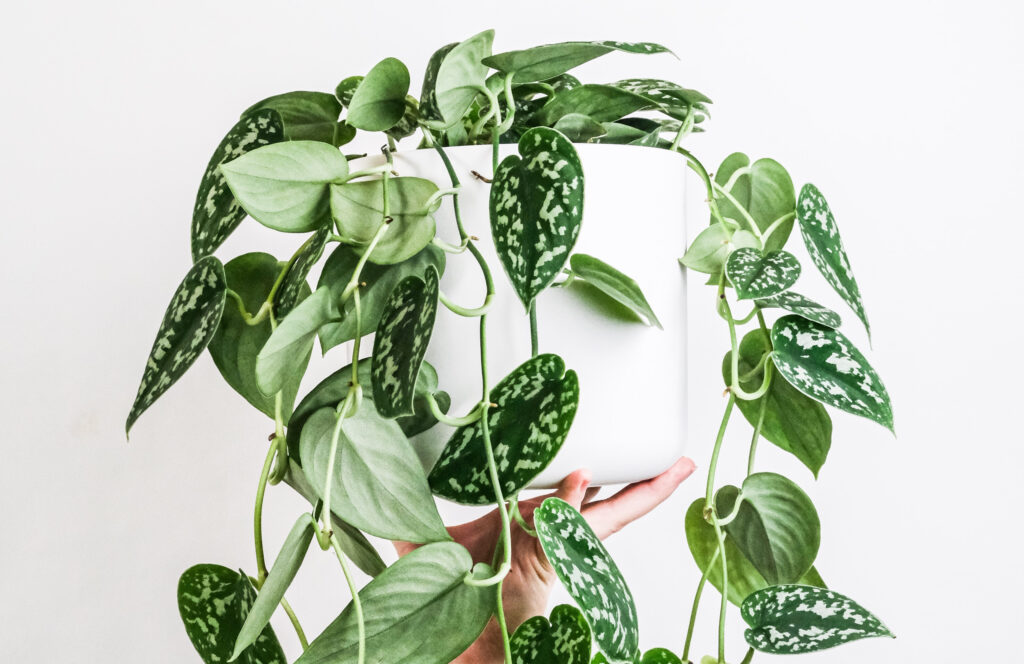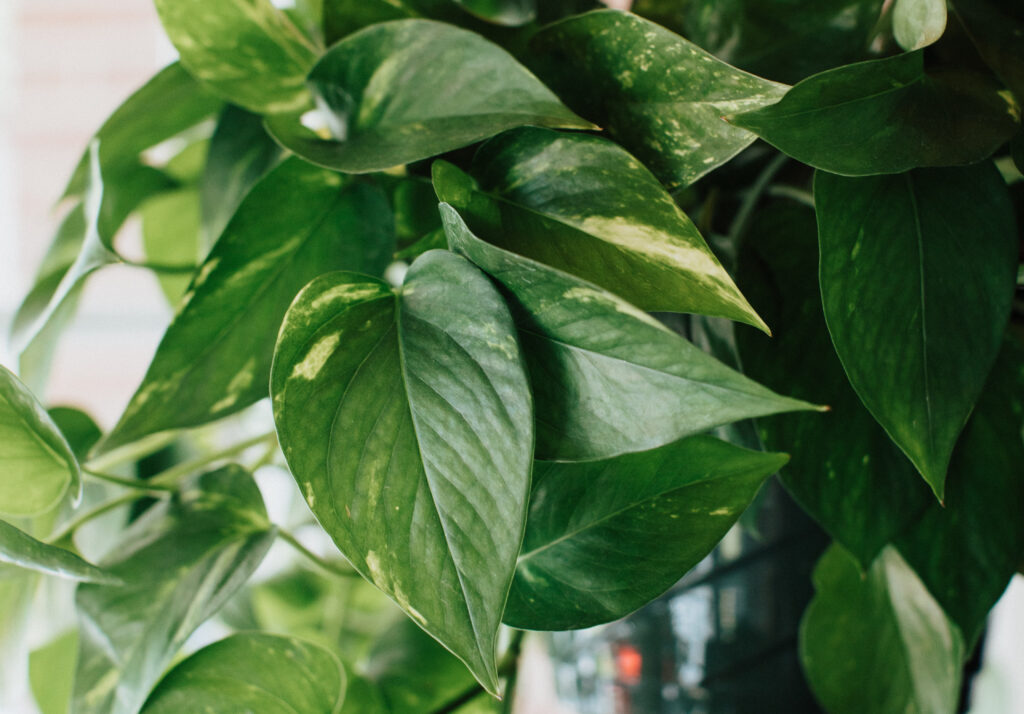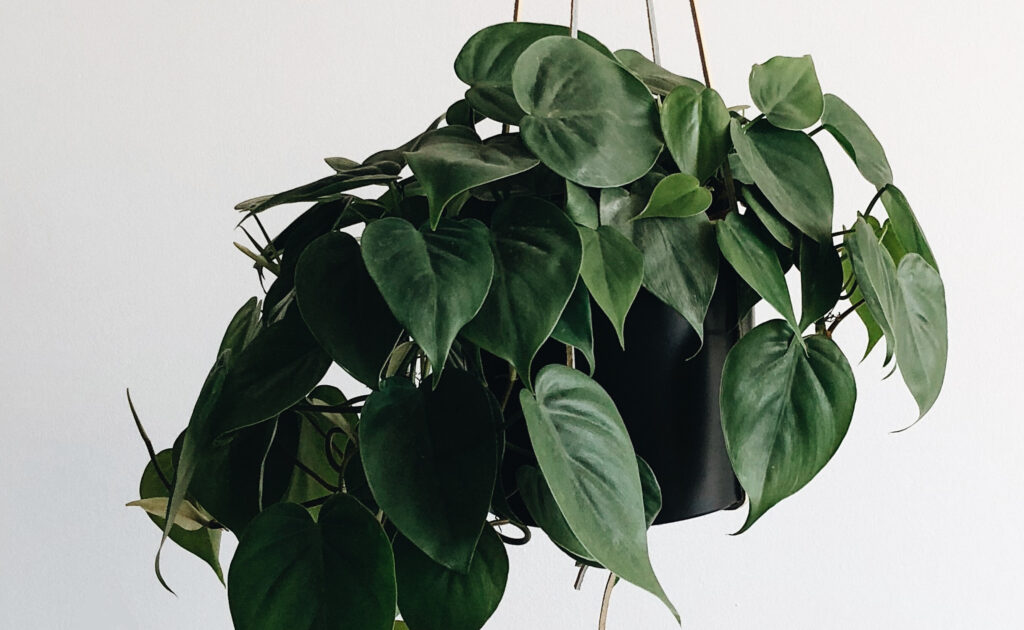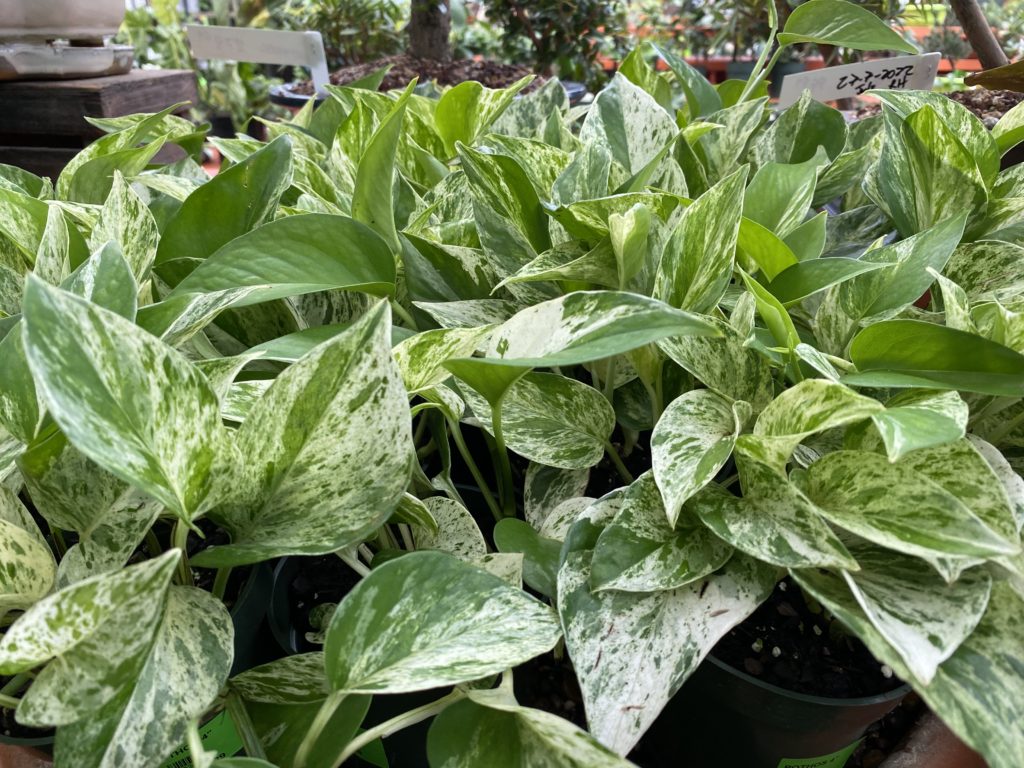It’s essential to choose the best soil for your pothos plant to ensure it stays healthy and thriving. But with so many options available, it can be challenging to know where to start. That’s why we’re here to help! We’ll explore the different types of soil that are suitable for pothos and provide you with tips on how to choose the best one for your plant. So, let’s get started!
Pothos, also known as Devil’s Ivy, is a plant that is widely adored for its stunning foliage and ease of care. This plant is a member of the Araceae family and is native to the Solomon Islands. Pothos is a trailing vine that can grow up to 10 feet long, making it an excellent option for hanging baskets or training up a trellis. The leaves of the pothos plant are heart-shaped and come in a variety of colors, including green, yellow, and variegated. Pothos is a fantastic choice for beginners or anyone looking for a low-maintenance plant that can add a touch of green to their home or office.
Importance of Choosing the Right Soil

When it comes to the health and growth of your pothos plant, the soil you choose is of utmost importance. The soil is responsible for providing the necessary nutrients, water, and oxygen that the plant needs to thrive. However, choosing the wrong type of soil can lead to a host of problems, including poor drainage, root rot, and stunted growth.
To ensure that your pothos plant is healthy and thriving, it is important to choose a soil that is well-draining and rich in organic matter. The soil should be able to hold moisture without becoming waterlogged, as this can prevent water from draining properly and cause the roots to suffocate. On the other hand, if the soil is too light and sandy, it may not retain enough moisture for the plant to absorb, leading to dehydration and drying out.
In addition to providing the necessary nutrients and water, choosing the right soil can also help prevent pests and diseases. Healthy soil with the right balance of nutrients can help the plant resist pests and diseases, while poor soil can make the plant more susceptible to infestations and infections.
Selecting the right soil for your pothos plant is essential for its overall health and growth. By choosing a soil that is well-draining, rich in organic matter, and has the right balance of nutrients, you can help prevent issues such as poor drainage, root rot, stunted growth, and pest infestations. With the right soil, your pothos plant can thrive and remain healthy for years to come.
Characteristics of Ideal Pothos Soil
When it comes to creating the perfect soil for pothos, there are a few key characteristics that you need to keep in mind. First, you want to make sure that the soil is well-draining, as this will help to prevent waterlogging and root rot. However, at the same time, you also want to make sure that the soil is moist enough to keep your pothos happy and healthy.
Second, it’s important to ensure that your soil is rich in organic matter. This can come in many different forms, such as compost, peat moss, or well-rotted manure. By providing your pothos with plenty of nutrients, you can help to promote healthy growth and development.
Another key factor to consider when creating the perfect pothos soil is the pH level. Ideally, you want your soil to be slightly acidic to neutral, with a pH range of around 6.0 to 7.0. This will help to ensure that your plant is able to absorb all of the nutrients it needs to thrive.
Finally, it’s important to make sure that your soil is loose and airy, as this will allow for proper aeration and root growth. A mixture of potting soil, perlite, and vermiculite can be a great way to achieve the ideal texture for your pothos soil.
Overall, by taking the time to create the perfect soil for your pothos, you can help to ensure that your plant grows to its full potential and stays healthy and happy for years to come.
Types of Soil for Pothos
When it comes to the growth of pothos, the soil type you choose is of utmost importance. Pothos plants are known for their adaptability to various soil types, but some soils are more conducive to their growth than others. Here are some of the best soil types for pothos:
1. Well-draining soil
Pothos plants prefer soil that is well-draining and does not hold onto excess moisture. This is because their roots can easily rot if they are constantly sitting in water. A good well-draining soil mix should contain a combination of peat moss, perlite, and vermiculite. It’s important to note that the complexity of the soil mix is crucial to the plant’s health.
2. Potting soil
A good quality potting soil mix is also a great option for pothos plants. These mixes are usually formulated with a blend of organic materials like peat moss, compost, and bark, which provide the necessary nutrients and drainage for the plant. The variation in the soil mix is what makes it a great option for pothos plants.
3. Soilless mix
Soilless mixes are becoming increasingly popular among indoor gardeners, and for good reason. These mixes are made up of materials like coconut coir, perlite, and vermiculite, which provide excellent drainage and aeration for the plant’s roots. The complexity of the soilless mix is what makes it a great option for pothos plants.
4. Vermiculite
Vermiculite is a lightweight, sterile material that is often used as a soil amendment. It helps to improve soil drainage and aeration, making it a great option for pothos plants. The variation in the soil amendment is what makes it a great option for pothos plants.
5. Peat moss
Peat moss is another popular soil amendment that is often used in potting mixes. It helps to retain moisture in the soil while also improving drainage and aeration. The complexity of the soil amendment is what makes it a great option for pothos plants.
The best soil for pothos plants is one that is well-draining, nutrient-rich, and provides good aeration for the roots. Whether you choose a potting soil mix, a soilless mix, or a combination of different materials, make sure to choose a soil that will help your pothos thrive. The complexity and variation in the soil mix or amendment is what will ultimately lead to the success of your pothos plant.
Potting Mix
When it comes to selecting the perfect potting mix for your pothos, there are a few key factors to consider. First and foremost, you want to choose a soil that is well-draining and won’t hold onto excess moisture. This is crucial for ensuring that your pothos doesn’t become waterlogged and develop root rot.
But what exactly makes a potting mix well-draining? Well, it all comes down to the composition of the soil. A good potting mix for pothos should be light and airy, allowing for proper aeration and drainage. This means that the soil should be able to hold onto just enough moisture to keep your plant hydrated, but not so much that it becomes waterlogged.
One popular option for pothos is a mix of peat moss, perlite, and vermiculite. This combination provides a good balance of moisture retention and drainage, while also providing essential nutrients for the plant. However, there are many other options available as well, including commercial potting mixes specifically designed for indoor plants.
When selecting a potting mix, it’s important to ensure that it is free of pests and diseases before using it to pot your pothos. This can be done by sterilizing the soil in the oven or microwave, or by purchasing a pre-sterilized mix from a reputable supplier.
Overall, the key to choosing the best potting mix for pothos is to look for a well-draining, nutrient-rich soil that will provide the ideal growing conditions for this popular indoor plant. With the right potting mix, your pothos is sure to thrive and bring beauty to your home for years to come.
Peat Moss
When it comes to enhancing the soil quality for pothos plants, peat moss is a top choice. This organic material is harvested from bogs and wetlands, and it’s known for its moisture retention capabilities. This is particularly important for pothos plants, which thrive in consistently moist soil. This will improve drainage and prevent the soil from becoming waterlogged, which can lead to root rot. Peat moss is also slightly acidic, which is perfect for pothos plants. These plants prefer soil with a pH between 6.0 and 7.0, and peat moss falls right within that range.
So, to sum it up, peat moss is a fantastic option for pothos plants. It provides moisture retention, acidity, and organic matter to the soil. However, it’s important to use it in combination with other materials to ensure proper drainage and prevent overwatering.
Perlite
Perlite, a soil amendment that is often used in potting mixes for pothos plants, is a lightweight and porous material made from volcanic glass. Its popularity stems from its ability to improve drainage and aeration in the soil, making it an excellent choice for pothos plants.
One of the main benefits of using perlite in your pothos soil mix is its ability to prevent waterlogging. Pothos plants prefer moist but well-draining soil, and perlite helps to achieve this balance. The porous nature of perlite allows excess water to drain away from the roots, preventing them from becoming waterlogged and potentially rotting.
In addition to improving drainage, perlite also helps to increase aeration in the soil. The tiny air pockets in perlite allow for better circulation of air around the roots, which can help to prevent root rot and other soil-borne diseases. This is especially important for pothos plants, which are susceptible to root rot if they are overwatered or if the soil is too compacted.
To ensure the best results, it is important to mix perlite thoroughly with other soil components such as peat moss or coconut coir. A good ratio to aim for is 1 part perlite to 2 parts soil. This will provide the perfect balance of drainage, aeration, and moisture retention for your pothos plant.
Overall, perlite is an excellent choice for pothos soil because of its ability to improve drainage and aeration. By using perlite in your soil mix, you can help to ensure that your pothos plant thrives and stays healthy for years to come.
Vermiculite
Vermiculite, a naturally occurring mineral, is a popular soil amendment that is often utilized in potting mixes for pothos plants. This lightweight and porous material is created by heating and expanding the mineral. Its ability to retain moisture and provide aeration to the roots makes it an excellent choice for pothos plants.
One of the main advantages of incorporating vermiculite into your pothos soil mix is its water-holding capacity. This is particularly crucial for pothos plants, which thrive in consistently moist soil. Vermiculite can absorb up to three to four times its weight in water, which means that it can help to prevent your pothos from drying out between waterings.
Moreover, vermiculite’s porous structure provides excellent aeration to the roots. This allows air to circulate through the soil, preventing root rot and other fungal diseases that can be caused by overly wet soil.
It is important to note that vermiculite is a soil amendment and not a complete soil replacement. Therefore, it should be added to a high-quality potting mix in a ratio of about 1:1 or 1:2 (vermiculite to potting mix).
Overall, vermiculite is an excellent choice for pothos plants, as it helps to provide the ideal balance of moisture retention and aeration to the roots. If you are looking to enhance the health and growth of your pothos, vermiculite is definitely worth considering.
Sand
When it comes to enhancing the soil quality of your pothos plants, sand is a common and effective soil amendment. This coarse material is a great option for those who want to improve the drainage and aeration of their soil. By allowing water to flow through it easily, sand prevents the soil from becoming waterlogged and reduces the risk of root rot.
However, not all sand is created equal. It is important to choose a type of sand that is free of contaminants and has a consistent particle size. Coarse sand is preferred over fine sand, as it provides better drainage and aeration. You can find sand at most garden centers or home improvement stores.
To incorporate sand into your pothos soil mix, simply mix it with other soil amendments such as peat moss, perlite, or vermiculite. The key is to achieve a good ratio of one part sand to two parts other soil amendments. But don’t forget to mix the soil thoroughly before planting your pothos.
Overall, sand is a great option for those looking to improve the drainage and aeration of their pothos soil mix. It is easy to find and can be a cost-effective solution for those on a budget. Just remember to choose a high-quality sand and mix it thoroughly with other soil amendments for the best results.
DIY Pothos Soil Mix Recipe
If you’re seeking to concoct your own soil mix for your pothos plant, there are a few key ingredients that you’ll want to include. Here’s a simple recipe to get you started:
Ingredients:
– 2 parts peat moss
– 1 part perlite
– 1 part vermiculite
– 1 part compost or worm castings
Instructions:
1. Begin by mixing together the peat moss, perlite, and vermiculite in a large container.
2. Add in the compost or worm castings and mix well.
3. If the mixture seems too dry, you can add a bit of water to help it come together.
4. Once everything is well combined, you’re ready to use your DIY pothos soil mix!
This recipe provides a well-draining, nutrient-rich soil that will help your pothos thrive. The peat moss helps to retain moisture, while the perlite and vermiculite provide plenty of air pockets for good drainage. The compost or worm castings add valuable nutrients to the mix, which will help your plant grow strong and healthy.
It’s important to keep in mind that selecting a pot with good drainage holes and watering your pothos only when the top inch of soil feels dry to the touch are crucial steps in ensuring your plant’s success. With the right soil mix and proper care, your pothos will be a beautiful and thriving addition to your home!
How to Repot Pothos

Repotting your pothos plant is a crucial aspect of its care routine, as it enables the plant to flourish and thrive in a new environment with fresh soil and nutrients. To achieve this, there are several steps you need to follow, which we will outline below.
First, it is essential to choose the right pot for your pothos plant. You should select a pot that is one size larger than the current pot, ensuring that it has drainage holes at the bottom to prevent water from accumulating and causing root rot.
Next, you need to prepare the soil. It is recommended that you use a well-draining soil mix that is rich in organic matter. You can create your own mix by combining equal parts of peat moss, perlite, and vermiculite.
Once you have prepared the soil, it is time to remove the plant from its current pot. This should be done gently, loosening the soil around the roots and carefully lifting the plant out of the pot. It is crucial to be careful not to damage the roots.
If the roots are circling around the pot, you should trim them to encourage new growth. This can be done using clean, sharp scissors or pruning shears to cut away any dead or damaged roots.
After trimming the roots, you should add soil to the new pot, filling it with enough soil to cover the bottom and create a small mound in the center. You can then position the plant in the center of the pot and add more soil around the roots, gently pressing the soil down to remove any air pockets.
Once the plant is in the new pot, it is time to water it thoroughly to help settle the soil and encourage root growth. You should allow the excess water to drain out of the bottom of the pot.
Finally, you should place the plant in a bright, indirect light after repotting. It is essential to avoid direct sunlight, as it can scorch the leaves.
By following these steps, you can ensure that your pothos plant has the best soil and environment to grow and thrive. Remember to repot your pothos every 1-2 years to keep it healthy and happy.
Common Mistakes to Avoid When Choosing Pothos Soil

When it comes to selecting the optimal soil for your pothos plant, there are a plethora of pitfalls to avoid. These missteps can result in stunted growth, root decay, and even the untimely demise of your beloved plant. Here are some of the most prevalent mistakes to steer clear of when selecting pothos soil:
1. Opting for soil that is heavy and compacted
Pothos plants thrive in soil that is loose and well-draining, allowing for ample air circulation around the roots. Heavy, compacted soil can smother the roots and lead to root rot.
2. Choosing soil that is excessively nutrient-rich
Pothos plants do not require copious amounts of nutrients, and utilizing soil that is too nutrient-dense can result in excessive growth and weak stems. It is best to select a soil that is balanced and not overly nutrient-rich.
3. Using soil that is either too dry or too wet
Pothos plants prefer soil that is consistently moist but not waterlogged. Soil that is too dry or too wet can cause undue stress to the plant and lead to root rot.
4. Neglecting to incorporate drainage material
Pothos plants necessitate proper drainage to prevent water from pooling around the roots. Failing to add drainage material, such as perlite or sand, can result in waterlogged soil and root rot.
5. Utilizing soil that is contaminated with pests or diseases
It is imperative to use clean, sterile soil when repotting your pothos plant. Using soil that is contaminated with pests or diseases can spread these issues to your plant and other plants in your home.
By avoiding these common mistakes, you can ensure that your pothos plant has the best possible soil for robust growth and a lengthy lifespan.
Conclusion: Choosing the Best Soil for Your Pothos
When it comes to the growth and overall health of your pothos, the soil you choose is of utmost importance. You must consider a variety of factors, including drainage, nutrient content, and aeration. The ideal soil for pothos is a delicate balance of these elements. A mixture of peat moss, perlite, and vermiculite is a great option, but it is not the only one.
Heavy soils and those that retain too much moisture can be disastrous for your pothos, leading to root rot and other issues. Adding organic matter such as compost or worm castings can be a game-changer for adding nutrients that will provide your pothos with the necessary nutrients to thrive and remain healthy for years to come.
Frequently Asked Questions
What type of soil is best for pothos?
Pothos plants prefer well-draining soil that is rich in organic matter. A good potting mix for pothos should contain peat moss, perlite, and vermiculite. You can also add some sand or bark to improve drainage.
Can I use regular garden soil for my pothos?
No, it is not recommended to use regular garden soil for pothos. Garden soil is too heavy and can retain too much moisture, which can lead to root rot. Pothos plants prefer a lighter, well-draining soil mix.
Do I need to add fertilizer to the soil?
Yes, pothos plants benefit from regular fertilization. You can use a balanced, water-soluble fertilizer every 2-3 weeks during the growing season. Be sure to follow the instructions on the fertilizer package and do not over-fertilize, as this can damage the plant.
How often should I water my pothos?
Pothos plants prefer to be kept evenly moist, but not waterlogged. Water your pothos when the top inch of soil feels dry to the touch. Be sure to water thoroughly, allowing the excess water to drain out of the bottom of the pot.
Can I use a pot without drainage holes?
No, it is not recommended to use a pot without drainage holes for pothos. Without proper drainage, the soil can become waterlogged and lead to root rot. If you want to use a decorative pot without drainage holes, you can place a plastic liner with drainage holes inside the pot and remove it when watering.

